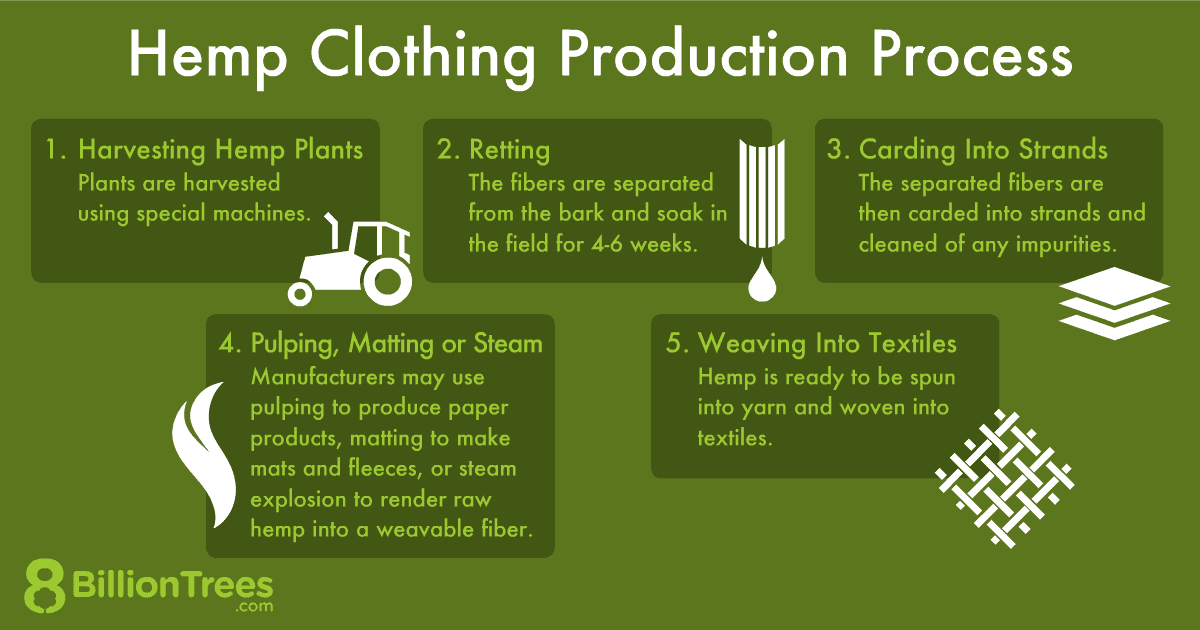Imagine a world where sustainability and style go hand in hand, where the clothes we wear not only make us look good but also help create a more circular economy. Enter hemp clothing, a game-changer in the world of fashion. From its eco-friendly cultivation to its versatile uses, hemp clothing plays a significant role in promoting a sustainable and circular fashion industry. In this article, we will explore how the adoption of hemp clothing can contribute to the circular economy in fashion, and why it’s time to embrace this natural and innovative fabric. Get ready to discover the untapped potential of hemp clothing and its transformative impact on the fashion industry.
Benefits of Hemp Clothing in the Circular Economy
Hemp clothing offers several benefits that make it a valuable asset in the circular economy. By choosing hemp as a fabric, you can contribute to a more sustainable and eco-friendly fashion industry. Here are some key advantages of hemp clothing:
1. Sustainable Production Process
Hemp is known for its sustainable production process. It requires significantly less water, fertilizer, and pesticide compared to other crops commonly used in the textile industry. Hemp can be grown organically, reducing the reliance on harmful chemicals and promoting soil health. By choosing hemp clothing, you are supporting a sustainable production process that minimizes the environmental impact.
2. Renewable and Eco-friendly Fabric
One of the remarkable characteristics of hemp is its renewable nature. Hemp plants can be harvested within a short period, typically around 120 days, making it a highly efficient crop. The fabric produced from hemp is also biodegradable and non-toxic, ensuring a minimal ecological footprint. When you opt for hemp clothing, you choose a fabric that aligns with the principles of the circular economy.
3. Reduced Water Usage
Water scarcity is a global concern, and the textile industry is a major contributor to water pollution and wastage. However, hemp clothing offers a solution by reducing water usage significantly. Hemp crops require only a fraction of the water needed for cotton cultivation. By choosing hemp clothing, you are conserving water resources and making a positive impact on the circular economy.
4. Less Chemical Usage
The use of pesticides and herbicides in conventional farming practices contribute to environmental degradation. Hemp, on the other hand, has a natural resistance to pests, reducing the need for chemical interventions. Hemp can be grown organically without harming the soil or nearby ecosystems. By wearing hemp clothing, you are supporting an industry that champions pesticide reduction and promotes a healthier environment.
5. Biodegradable and Compostable
Hemp clothing is biodegradable and compostable. When the garment reaches the end of its life cycle, it can easily degrade in natural environments without releasing harmful toxins. Unlike synthetic fabrics that take years to decompose, hemp clothing breaks down quickly, leaving behind minimal waste. By choosing hemp clothing, you are contributing to waste reduction and promoting a more circular approach to fashion.
6. Carbon Sequestration
Hemp plants play a significant role in carbon sequestration. As they grow, they absorb carbon dioxide from the atmosphere and convert it into valuable biomass. This process helps to mitigate climate change by reducing greenhouse gas emissions. By opting for hemp clothing, you support the cultivation of a crop that actively contributes to carbon sequestration, making a positive impact on the circular economy.
Hemp Cultivation and Harvesting
Understanding the cultivation and harvesting process of hemp is crucial to appreciate its role in the circular economy. Here are some key aspects to consider:
1. Fast-growing Plant
Hemp plants are known for their rapid growth rate. They can reach maturity in just 120 days, making them one of the fastest-growing crops. This quick growth cycle allows for more frequent harvests, increasing the efficiency of hemp cultivation. The fast growth rate of hemp contributes to its viability as a sustainable fiber source, especially in the context of the circular economy.
2. Low Requirement for Resources
Compared to other crops, hemp has relatively low requirements for resources such as water and fertilizer. It can thrive in a variety of soil types, reducing the need for extensive land preparation. In addition, hemp crops have deep root systems that help prevent soil erosion and enhance soil health. The low resource requirements of hemp cultivation make it a favorable choice for sustainable fabric production.
3. Minimal Use of Pesticides and Herbicides
Thanks to its natural resistance to pests and diseases, hemp cultivation requires minimal use of pesticides and herbicides. Hemp plants have a built-in defense mechanism that deters pests, reducing the need for chemical interventions. As a result, hemp cultivation minimizes the environmental impact typically associated with conventional farming practices. Choosing hemp clothing supports a farming method that prioritizes ecological balance.
4. No Need for Irrigation
Another advantage of hemp cultivation is its minimal need for irrigation. Hemp plants have a remarkable ability to tolerate drought conditions, making them well-suited for regions with limited water resources. This characteristic is especially valuable in the context of sustainable farming practices and the circular economy. By selecting hemp clothing, you contribute to water conservation efforts and reduce the strain on freshwater sources.
5. Harvesting Techniques
Harvesting hemp involves cutting the stalks of the mature plants and collecting the fiber-rich stems. Mechanical processes are typically used for hemp harvesting, ensuring maximum efficiency and minimal waste. The harvested hemp stalks can then undergo further processing to extract the fibers, which are later transformed into clothing. The careful harvesting techniques employed in the hemp industry contribute to waste reduction and promote a more circular approach to textile production.
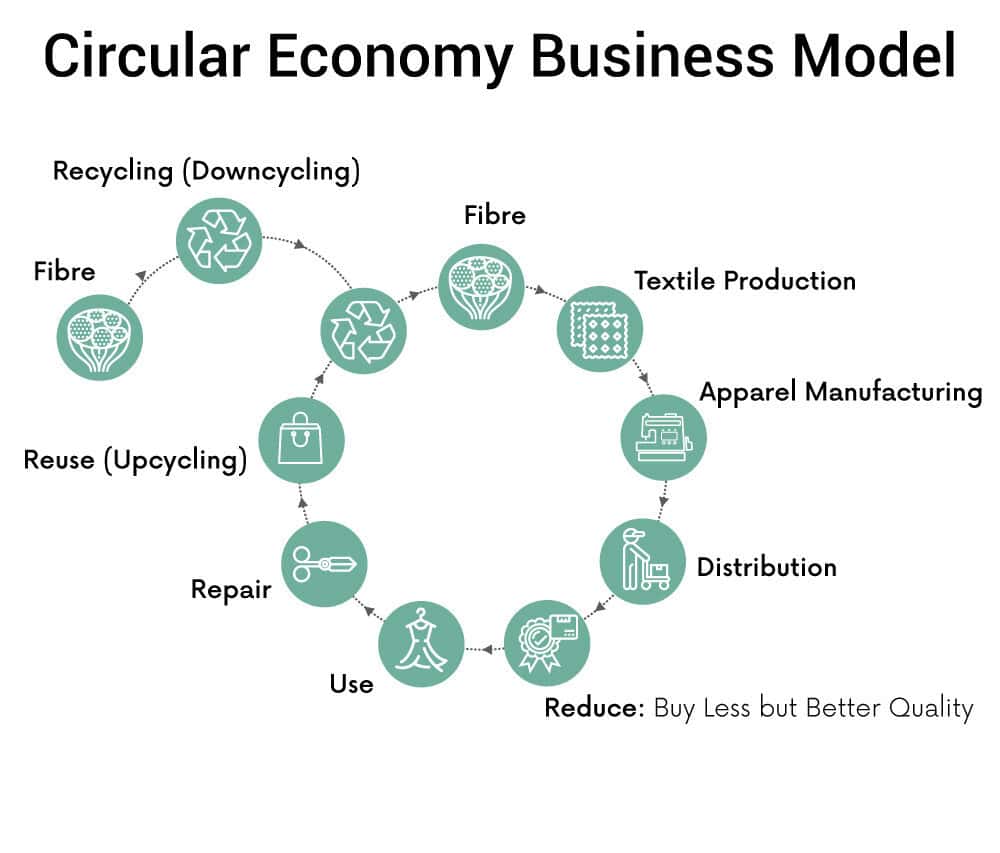
This image is property of images.squarespace-cdn.com.
Manufacturing and Production of Hemp Clothing
The manufacturing and production processes of hemp clothing play a crucial role in ensuring its sustainability. Here are the key steps involved:
1. Fiber Extraction Process
The first step in the manufacturing of hemp clothing is the extraction of fibers from the harvested hemp stalks. This process usually involves removing the outer layer of the stalk, known as the bast fiber, which is then cleaned to remove impurities. Various techniques, such as retting or decortication, can be used to separate the fibers from the woody core. The fiber extraction process is critical in obtaining high-quality fibers for the production of hemp clothing.
2. Spinning and Weaving
Once the hemp fibers are extracted, they can be spun into yarns using traditional spinning techniques. These yarns are then woven or knitted into fabrics, which serve as the foundation for hemp clothing. The spinning and weaving processes require skill and precision to ensure consistency and durability in the final product. By using hemp fibers for spinning and weaving, the fashion industry embraces a sustainable and circular approach to fabric production.
3. Dyeing and Printing
The next step in the production of hemp clothing involves dyeing and printing the fabric to create various colors and patterns. It is essential to choose eco-friendly and non-toxic dyes that minimize the impact on the environment. Many hemp clothing manufacturers prioritize the use of natural dyes derived from plants, avoiding harmful synthetic chemicals. By opting for hemp clothing, you support a more sustainable dyeing and printing process.
4. Fabric Finishing and Treatments
Fabric finishing and treatments are crucial for enhancing the performance and aesthetics of hemp clothing. These processes may include washing, softening, or applying special coatings to the fabric to achieve desired qualities such as moisture-wicking or wrinkle resistance. It is important to choose finishing techniques that are environmentally friendly and do not compromise the sustainability of the fabric. Hemp clothing manufacturers strive to minimize the use of harmful chemicals in fabric finishing and ensure a more circular approach to production.
5. Product Manufacturing
The final step in the production of hemp clothing involves transforming the fabric into garments or other textile products. Skilled artisans and manufacturers utilize various sewing and construction techniques to create fashionable and functional hemp clothing. It is essential to prioritize durability and quality in product manufacturing to ensure prolonged use and reduce waste. By supporting brands that prioritize well-made hemp products, you contribute to the circular economy by promoting longevity and reducing the need for constant replacements.
Circularity in Hemp Clothing Design
Hemp clothing design holds immense potential for embracing circular principles. Here are some key aspects of circularity in hemp clothing design:
1. Durability and Longevity
Hemp clothing is renowned for its durability. The strong and resilient fibers of hemp make it ideal for producing long-lasting garments that can withstand everyday wear and tear. By investing in hemp clothing, you are choosing products that are designed to last, reducing the need for frequent replacements and contributing to a more circular fashion industry.
2. Repair and Restoration
Promoting repair and restoration is an essential element of circular fashion, and hemp clothing is well-suited for this approach. The strong and flexible nature of hemp fibers allows for easy repairs and alterations, enabling garments to be kept in circulation for longer periods. Hemp clothing designers can incorporate design features that facilitate repairs, such as removable buttons or patches. By valuing repair and restoration, you actively participate in the circular economy.
3. Adaptability and Versatility
Hemp fabrics offer versatility and adaptability in fashion design. They can be blended with other fibers, such as organic cotton or recycled polyester, to create innovative textiles with enhanced properties. Hemp clothing can be designed to be multi-functional, allowing a single garment to serve multiple purposes. Versatile and adaptable hemp clothing promotes a more sustainable and circular approach to fashion.
4. Recyclability and Upcycling
Hemp clothing can be recycled or upcycled at the end of its life cycle, keeping valuable resources in circulation. Textile recycling involves transforming old or worn-out hemp garments into new fibers or fabrics, which can be used to create new clothing items. Upcycling, on the other hand, involves repurposing hemp clothing to create new products, extending their lifespan. Investing in hemp clothing supports the development of recycling and upcycling initiatives within the fashion industry.
5. Sharing and Rental
The concept of sharing and rental platforms has gained popularity in the fashion industry, promoting access over ownership. Hemp clothing lends itself well to this model due to its durability and timeless appeal. Sharing or renting hemp clothing allows individuals to enjoy fashionable and sustainable garments without the need for a large wardrobe. By embracing sharing and rental platforms for hemp clothing, you contribute to the circular economy by minimizing waste and maximizing resource efficiency.
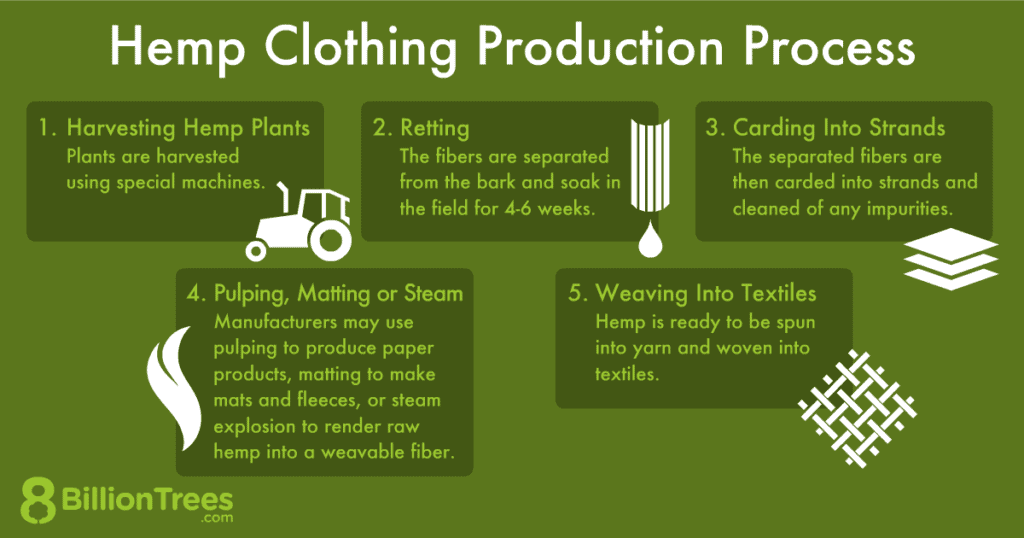
This image is property of 8billiontrees.com.
The Importance of Hemp Clothing in Reducing Waste
Hemp clothing plays a crucial role in reducing waste in the fashion industry. Here are some key aspects of its importance:
1. Fast Fashion and its Impacts
Fast fashion, characterized by the rapid production and consumption of clothing, has significant environmental and social impacts. The demand for cheap and trendy garments has led to overproduction, excessive waste generation, and exploitation of labor. By choosing hemp clothing, you distance yourself from the fast fashion cycle and actively participate in waste reduction efforts.
2. Waste Generation from Textile Industry
The textile industry is a major contributor to waste generation, primarily through the disposal of discarded garments. Synthetic fabrics can take hundreds of years to decompose, clogging landfills and polluting the environment. Hemp clothing offers a solution by being biodegradable and compostable, ensuring minimal waste generation. By supporting hemp clothing, you contribute to landfill diversion and waste prevention.
3. Landfill Diversion and Waste Prevention
Hemp clothing actively contributes to landfill diversion and waste prevention. When disposed of, hemp garments can naturally decompose without releasing harmful toxins into the environment. This characteristic helps divert textiles from landfills and reduces the overall waste footprint. By embracing hemp clothing, you support a more sustainable and circular approach to waste management.
4. Recycling and Waste Management
The recyclability of hemp clothing presents an opportunity to minimize waste and achieve a more circular fashion industry. Hemp fibers can be recycled and transformed into new fabrics, reducing the reliance on virgin materials. Additionally, waste management initiatives can help collect and process discarded hemp garments, ensuring that they are properly recycled or upcycled. By choosing hemp clothing, you enable the development of recycling and waste management infrastructure within the fashion industry.
Hemp as an Alternative to Conventional Fibers
Hemp offers a sustainable alternative to conventional fibers, such as cotton, polyester, and rayon. Here’s how hemp compares in terms of its environmental impact:
1. Environmental Impact of Conventional Fibers
Conventional fibers like cotton, polyester, and rayon have significant environmental impacts. Cotton cultivation requires extensive water usage and often involves the use of harmful pesticides and fertilizers. Polyester is derived from non-renewable fossil fuels and contributes to microplastic pollution. Rayon, made from wood pulp, contributes to deforestation and chemical pollution. By choosing hemp clothing, you opt for a fabric that has a low environmental footprint compared to these conventional fibers.
2. Hemp’s Low Environmental Footprint
Hemp has a low environmental footprint due to its sustainable cultivation practices. As discussed earlier, hemp requires minimal water, pesticides, and fertilizers. Its rapid growth rate also contributes to overall resource efficiency. Furthermore, hemp plants can improve soil health by absorbing carbon dioxide and preventing soil erosion. The cultivation and production of hemp clothing have a relatively lower impact on the environment compared to conventional fibers.
3. Comparisons to Cotton, Polyester, and Rayon
When comparing hemp to other fibers, it becomes evident that hemp offers several advantages. Cotton requires significantly more water, while polyester relies on non-renewable fossil fuels. Rayon production contributes to deforestation. Hemp, on the other hand, has a sustainable cultivation process, minimal water requirements, and its fibers can be extracted without the need for harmful chemicals. These characteristics make hemp a favorable alternative to conventional fibers, promoting a circular and eco-friendly fashion industry.
4. Hemp Blends and Performance Materials
Hemp can also be blended with other fibers to create performance materials. Hemp blends can enhance the durability, moisture-wicking properties, and breathability of fabrics. By blending hemp with other fibers, the fashion industry can create innovative materials that combine the sustainability of hemp with the performance attributes required in various applications. Hemp’s compatibility with different fibers further expands its potential in the circular economy of fashion.
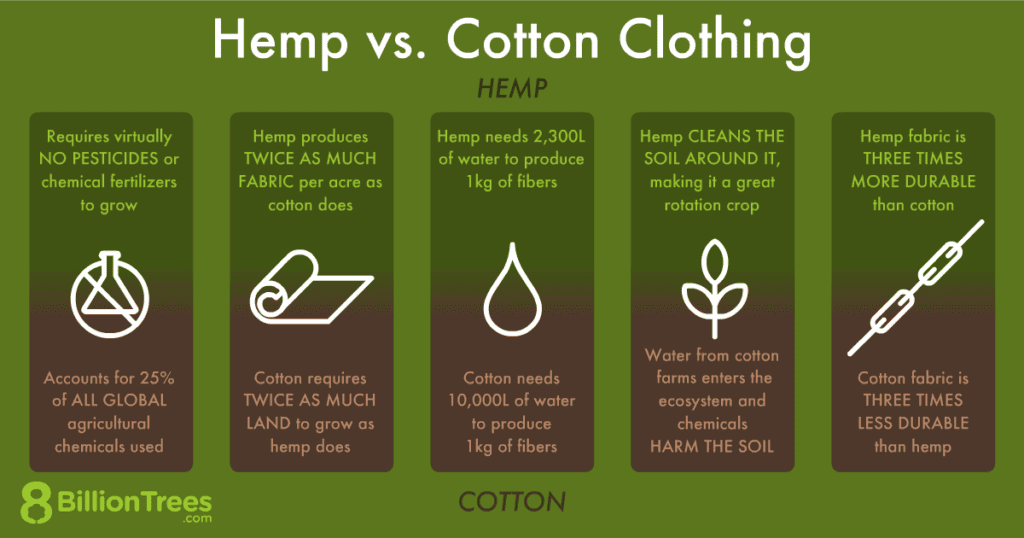
This image is property of 8billiontrees.com.
Challenges and Barriers to Hemp Clothing Adoption
Despite its numerous benefits, there are still challenges and barriers to the widespread adoption of hemp clothing. Here are some key factors that hinder its mainstream acceptance:
1. Legal and Regulatory Restrictions
Legal and regulatory restrictions surrounding the cultivation of hemp pose a significant challenge to its adoption. In some countries, hemp is classified as a controlled substance due to its association with the cannabis plant. This classification limits the cultivation and production of hemp, hindering its availability and accessibility in the fashion industry. Streamlining regulations and creating supportive policies could overcome this barrier and encourage the growth of the hemp clothing industry.
2. Lack of Awareness and Education
Limited awareness and education about hemp clothing pose another obstacle to its adoption. Many consumers may not be aware of the environmental benefits and versatility of hemp as a fabric. Educating the public about the advantages of hemp clothing, such as its sustainability, durability, and biodegradability, can help increase its demand and acceptance. Creating widespread awareness about the positive attributes of hemp clothing is crucial for its successful integration into the fashion industry.
3. Limited Availability and Access
The availability and access to hemp clothing are often limited due to factors such as distribution networks and market demand. Hemp clothing may not be as readily available as conventional fabrics in many retail outlets. Establishing supply chains and distribution networks that cater to hemp clothing can help overcome this barrier. Increased availability and access to hemp clothing would enable more consumers to make sustainable choices in their fashion purchases.
4. Cultural Perceptions and Misconceptions
Cultural perceptions and misconceptions surrounding hemp and its association with cannabis can deter the adoption of hemp clothing. Some individuals may still hold stigmatizing views about hemp, despite its distinct properties and usage in various industries. Shifting cultural perceptions and debunking misconceptions through education and awareness campaigns can help normalize hemp clothing and encourage its acceptance within society.
Supporting the Hemp Clothing Industry
To promote the growth of the hemp clothing industry and its integration into the circular economy, various stakeholders must contribute. Here are key areas of support:
1. Government Policies and Support
Government policies and support play a vital role in overcoming barriers to the hemp clothing industry. Governments can create favorable regulations that allow for the cultivation and production of hemp. This may include legalizing hemp cultivation, providing subsidies or incentives to farmers, and investing in research and development. By creating an enabling environment, governments can support the growth of the hemp clothing industry and its circular economy potential.
2. Research and Development
Investing in research and development is crucial for the advancement of hemp clothing technologies and practices. Research can help improve the efficiency of hemp cultivation, develop innovative manufacturing techniques, and explore new applications for hemp textiles. Collaborations between academic institutions, research organizations, and industry stakeholders can drive the development of sustainable and circular practices within the hemp clothing industry.
3. Consumer Demand and Behavior
Consumer demand and behavior play a significant role in shaping the fashion industry. By expressing a preference for sustainable and eco-friendly clothing options like hemp, consumers can drive market demand. It is essential for consumers to make conscious choices and support brands that prioritize hemp clothing. Increased consumer demand for hemp clothing will encourage manufacturers to expand their offerings and invest in sustainable production practices.
4. Collaboration and Partnerships
Collaboration and partnerships among various stakeholders are crucial for the growth of the hemp clothing industry. Brands, manufacturers, researchers, policymakers, and consumers need to come together to share knowledge, resources, and best practices. Collaborative initiatives can drive innovation, promote circularity, and address challenges collectively. By fostering collaboration and partnerships, the hemp clothing industry can thrive and contribute significantly to a more sustainable fashion ecosystem.
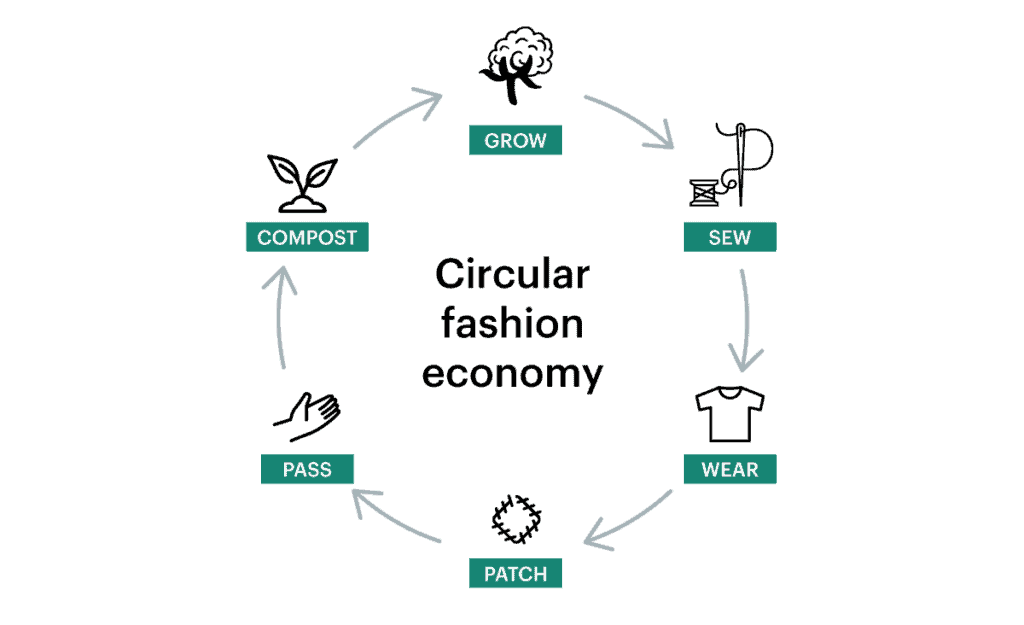
This image is property of blog.arcadia.com.
Case Studies and Success Stories
Several hemp clothing brands and sustainable fashion initiatives have made significant contributions to the circular economy. Here are some examples:
1. Hemp Clothing Brands and Designers
- Patagonia: Patagonia has been a pioneer in incorporating hemp into its clothing lines, emphasizing its durability and sustainability.
- Thought Clothing: Thought Clothing is a brand that offers a wide range of hemp clothing, focusing on timeless designs and ethical production practices.
- Jungmaven: Jungmaven is a brand that specializes in hemp-based t-shirts, promoting the environmental benefits of hemp clothing.
2. Sustainable Fashion Initiatives
- Fashion Revolution: Fashion Revolution is a global movement that encourages transparency and sustainability in the fashion industry. They advocate for the use of sustainable materials like hemp.
- Circular Fashion Summit: Circular Fashion Summit is an annual event that brings together industry leaders, innovators, and policymakers to discuss circularity in the fashion industry. Hemp clothing is often featured as a sustainable solution during these events.
These case studies and success stories highlight the impact and potential of hemp clothing in the circular economy. By learning from these examples, the fashion industry can further embrace hemp as a key alternative fabric.
Conclusion
Hemp clothing offers numerous benefits that make it a valuable asset in the circular economy of fashion. From its sustainable production process to its recyclability and reduced waste generation, hemp clothing has become a sustainable alternative to conventional fibers. While challenges and barriers exist, industry-wide collaboration, increased consumer demand, and supportive policies can promote the growth of the hemp clothing industry. By choosing hemp clothing, you contribute to a more sustainable and eco-friendly fashion industry, supporting the principles of the circular economy and paving the way for a more sustainable future.
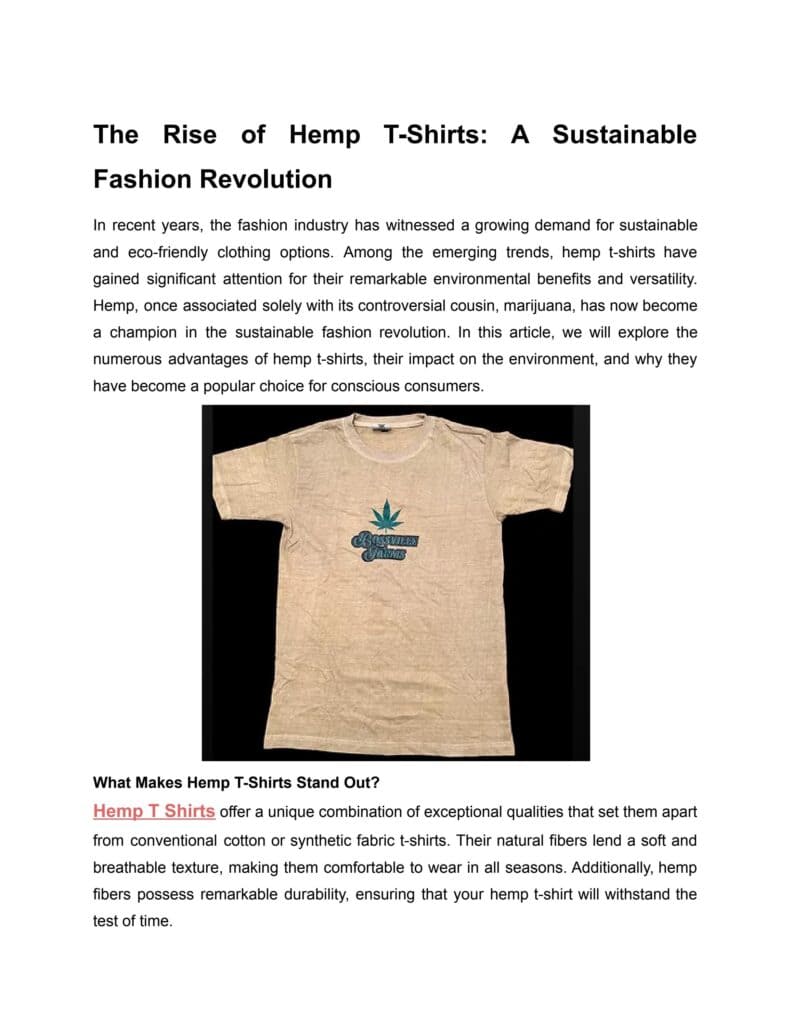
This image is property of image.isu.pub.
Recent Posts
Discover how bubble hash is rated on a 1 to 6 scale. From texture and color to aroma and potency, learn the key factors that determine the quality of bubble hash. Whether you're a seasoned cannabis...
Looking to learn about the most popular style of hash? This article explores the different types, from traditional to bubble hash, and reveals the people's favorite. Join us on a journey through the...

